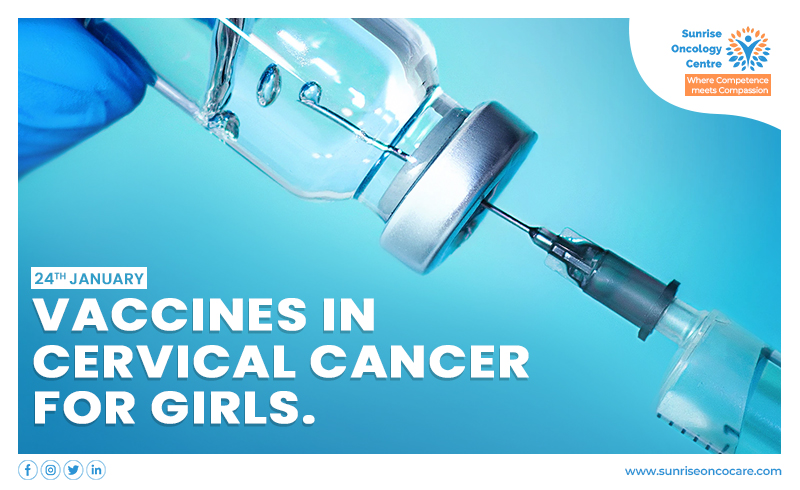The cervix is the uterus’s lowest point (where a baby grows during pregnancy). It looks like a doughnut and links the uterus to the vaginal entrance. It is covered in cell-based tissues. These healthy cells are the ones that can develop into pre-cancer cells.1
Cervical cancer, also known as cancer of the cervix, originates on the surface of the cervix. It occurs when the cells of the cervix start to transform into precancerous cells. Although not all precancerous cells progress to malignancy, identifying these cells and treating them before they become cancerous is crucial to preventing cervical cancer.1
It is more common in women aged 35 to 44. However, more than 15% of new instances are in women over the age of 65, particularly those who have not been undergoing regular tests.2
Cervical cancer is the fourth most common cancer in women. In 2018, an estimated 570 000 women were diagnosed with cervical cancer worldwide, while 311 000 died as a result of the disease.3
What are the symptoms of cervical cancer?3,4
Many women with cervical cancer are unaware they have the disease since symptoms usually do not appear until the disease is advanced. When symptoms do occur, they are frequently misdiagnosed as common diseases such as menstrual cycles and urinary tract infections (UTIs).
Typical cervical cancer symptoms are:
- unusual bleeding, like in between periods, after sex, or after menopause
- vaginal discharge that looks or smells different than usual
- pain in the pelvis
- needing to urinate more often
- pain during urination
See your doctor for an exam if you notice any of these symptoms.
Cervical cancer causes
The majority of cervical cancer cases are caused by the sexually transmitted human papillomavirus (HPV). This is the same virus that causes genital warts. There are around 100 distinct strains of HPV. Cervical cancer is caused by only a subset of viruses. HPV-16 and HPV-18 are the most common types that cause cancer. Being infected with a cancer-causing type of HPV does not guarantee that one will get cervical cancer. The immune system eliminates the vast majority of HPV infections, often within 2 years.4
Ways to prevent cervical cancer2,4
Getting screened for cervical cancer with a Pap smear or hrHPV test on a regular basis is one of the simplest strategies to avoid it. Screening detects precancerous cells so that they can be treated before they develop into cancer.
Here are a few other ways one can reduce the risk of HPV and cervical cancer:
- limit the number of sexual partners
- always use a condom or other barrier method when having vaginal, oral, or anal sex
An abnormal Pap smear result indicates precancerous cells in the cervix.
The majority of cervical cancers are caused by HPV infection. The infection is preventable with the available vaccines against HPV. Vaccination is most effective before a person becomes sexually active. Both boys and girls can be vaccinated against HPV.
Which girls/women should receive HPV vaccination?
The HPV vaccine is recommended for girls aged 11 and 12. It is also advised for girls and women ages 13 to 26 who have not yet been vaccinated or have not completed the vaccine series; the HPV vaccine can also be given to females as young as 9 years old.5
As per the December 2022 WHO Position on HPV vaccines, WHO recommends the following schedule:6
- A one or two-dose schedule for girls aged 9-14
- A one or two-dose schedule for girls and women aged 15-20
- Two doses with a 6-month interval for women older than 21
A minimum of 2 doses and when feasible 3 doses remain necessary for those known to be immunocompromised and/or HIV-infected.
How effective is the HPV Vaccine?
The HPV vaccination targets the HPV types most commonly associated with cervical cancer, as well as malignancies of the vulva, vagina, anus, and oropharynx. It also protects against the HPV types that are responsible for the majority of genital warts. The HPV vaccine is extremely efficient in preventing both the targeted HPV varieties and the most frequent health problems caused by them.
The vaccine is less effective in preventing HPV-related disease in young women who have already been exposed to one or more HPV types. This is due to the fact that the vaccine protects against HPV before a person is exposed to it. The HPV vaccine does not treat existing HPV infections or diseases caused by HPV.
Conclusion
Cervical cancer is cancer that starts in the cells of the cervix. Most cervical cancers are associated with human papillomavirus (HPV), a sexually transmitted infection. It is recommended for 11 to 12-year-olds get two doses of the HPV vaccine to protect against cancers caused by HPV. Widespread immunization with the HPV vaccine could reduce the impact of cervical cancer and other cancers caused by HPV worldwide.
Reference:
- Cervical Cancer, available at: https://my.clevelandclinic.org/health/diseases/12216-cervical-cancer, Accessed on 6th Jan 2023.
- Cervical Cancer, https://www.webmd.com/cancer/cervical-cancer/cervical-cancer, Accessed on 6th Jan 2023.
- Cervical cancer, https://www.who.int/health-topics/cervical-cancer#tab=tab_1,
- Everything You Need to Know About Cervical Cancer, https://www.healthline.com/health/cervical-cancer, Accessed on 6th Jan 2023.
- HPV Vaccine Information For Young Women, https://www.cdc.gov/std/hpv/stdfact-hpv-vaccine-young-women.htm, Accessed on 6th Jan 2023.
- Human papillomavirus vaccines (HPV), https://www.who.int/teams/immunization-vaccines-and-biologicals/diseases/human-papillomavirus-vaccines-(HPV), Accessed on 6th Jan 2023.

